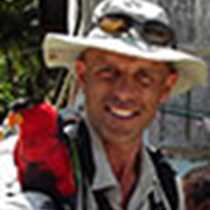Hinlopen Strait, Svalbard
The morning started with an early wake up call at Cape Fanshawe, home to an immense colony of breeding seabirds – surely one of the finest wildlife spectacles in the high Arctic. But the birds need no wake up call and at this time of year the colony knows no sleep, bustling 24/7 with activity. The sky and sea are filled with commuting birds, the air resonates with their calls and the scent of guano is unmistakable. Crammed in on narrow cliff ledges were tens of thousands of Brunnich’s guillemots. These seabirds have the smallest territories of any bird – just enough real estate to lay an egg straight onto the narrow ledges without building any sort of nest. Both adults will take turns incubating the egg and provisioning the chick until it is about half grown. Then, in an act of blind faith, the chick will leap from the cliff and in a gravity-assisted flight hopefully land on the sea close to its father. The male bird will then take the chick to sea to complete its development – a case of taking the chick to food rather than the food to the chick. This cycle is just reaching its end now here in Svalbard, at the end of the highly productive Arctic summer that these birds are here to take advantage of.
And all this before breakfast. The rest of the day we filled with a glacier hike, kayaking and Zodiac cruising in a sheltered fjord close to a tidewater glacier face. In the late afternoon two ice bears – a mother and cub – were spotted resting on a small island. Shallow inshore waters prevented a close approach, but we watched from a distance through spotting scopes. This evening we have entered the pack ice and the ship bumps and groans as we push our way through the floes. All eyes are trained on the ice in search of wildlife. With no sunset, and therefore no end to the search, who knows what the ‘night’ will bring?
The morning started with an early wake up call at Cape Fanshawe, home to an immense colony of breeding seabirds – surely one of the finest wildlife spectacles in the high Arctic. But the birds need no wake up call and at this time of year the colony knows no sleep, bustling 24/7 with activity. The sky and sea are filled with commuting birds, the air resonates with their calls and the scent of guano is unmistakable. Crammed in on narrow cliff ledges were tens of thousands of Brunnich’s guillemots. These seabirds have the smallest territories of any bird – just enough real estate to lay an egg straight onto the narrow ledges without building any sort of nest. Both adults will take turns incubating the egg and provisioning the chick until it is about half grown. Then, in an act of blind faith, the chick will leap from the cliff and in a gravity-assisted flight hopefully land on the sea close to its father. The male bird will then take the chick to sea to complete its development – a case of taking the chick to food rather than the food to the chick. This cycle is just reaching its end now here in Svalbard, at the end of the highly productive Arctic summer that these birds are here to take advantage of.
And all this before breakfast. The rest of the day we filled with a glacier hike, kayaking and Zodiac cruising in a sheltered fjord close to a tidewater glacier face. In the late afternoon two ice bears – a mother and cub – were spotted resting on a small island. Shallow inshore waters prevented a close approach, but we watched from a distance through spotting scopes. This evening we have entered the pack ice and the ship bumps and groans as we push our way through the floes. All eyes are trained on the ice in search of wildlife. With no sunset, and therefore no end to the search, who knows what the ‘night’ will bring?




